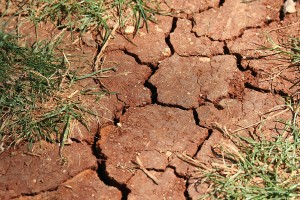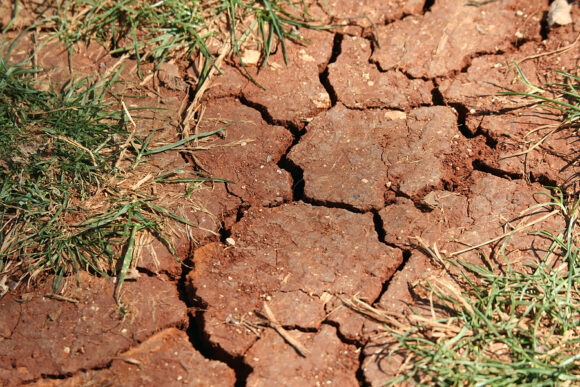What if decade-long cycles of wet and dry weather could be reliably predicted several years in advance?
The economic benefit could be in the billions, said Vikram Mehta, president and executive director of The Center for Research on the Changing Earth System of Maryland.
“Economic impacts are so large that people better take interest in what’s going on,” Mehta said.
The forecast for accurately predicting “decadal climate variability” – 10- to 20-year wet and dry weather cycles caused by interactions between the Pacific and Atlantic oceans and the atmosphere – looks promising to Mehta.
He was in Great Falls recently to talk to farmers and water managers about the ramifications of improved climate predictions.
Mehta is studying the climate cycles in the 10-state Missouri River basin, their economic impact and whether the weather can be predicted in time for farmers to practically use the information.
“Hopefully, that will improve their decision making,” Mehta said.
Mehta’s not-for-profit scientific research organization is being funded with a $1.5 million grant from the U.S. Department of Agriculture to study the reliability of decadal climate predictions and the ramifications for water supplies and the agriculture and energy sectors.
The organization previously has received grants from the National Oceanic and Atmospheric Administration for the research.
“These are natural climate cycles,” Mehta said. “It’s not climate change.”
 Ten- to 15-year wet and dry cycles have been well-documented going back thousands of years, he said. The cycles are caused by interactions between ocean currents and atmosphere, he said. Oceans store heat and when even small amounts are released, atmospheric changes in winds, temperature and precipitation result in places as far away as Montana.
Ten- to 15-year wet and dry cycles have been well-documented going back thousands of years, he said. The cycles are caused by interactions between ocean currents and atmosphere, he said. Oceans store heat and when even small amounts are released, atmospheric changes in winds, temperature and precipitation result in places as far away as Montana.
“We find pretty strong signals of these decadal climate cycles in the Missouri River basin,” Mehta said.
For example, stream flow data collected by the U.S. Geological Survey show that the flow past Great Falls in the 1980s was 60 to 80 percent below average, and 40 to 50 percent above average in the 1990s. Between 2001 and 2007, flows were again below average.
Decadal climate variability is not La Nina or El Nino, which are shorter term climate phenomenon related to ocean temperatures, Mehta said. One of the better-known examples of a decadal climate variability cycle is the 1930s Dust Bowl droughts in the United States, he said.
Can longer-term wet and dry cycles be reliability predicted? That’s the crux of the research.
“As (with) everything in cutting-edge science, you have to wait for a while before you know whether it’s useful or not,” Mehta said. “But we feel this may be the right way to go.”
One obstacle in the research is establishing credibility of the long-term outlooks, according to a paper published this year in the American Meteorological Society’s Weather, Climate and Society that Mehta co-authored.
Scientists must help build confidence in the users of the science through demonstrations of predictive skill, the paper says.
Currently, the only way accuracy can be tested is through “hindcasting” the climate conditions and by looking back on the effects of past events.
Mehta sees practical uses of the information for water managers, who control reservoir levels, and farmers, who need to make decisions on what kinds of crops to plant or whether to irrigate.
Research is focused on the Missouri River basin, which includes part or all of 10 states, including Montana, because it produces about 46 percent of U.S. wheat, 22 percent of the country’s grain corn and 34 percent of the cattle. The wet-dry cycles reveal themselves in data kept over the past century on stream flow, crop yield, surface and ground water, he said.
Initial results of the research show that the value of knowing the phase of a weather cycle to producers and water managers could be as much as $5 billion a year across the entire Missouri basin, Mehta said.
“So the producers and consumers would benefit to the tune of about $5 billion if you knew perfectly what’s going to happen over the next year,” Mehta said.
Farmers already make decisions based on a variety of factors, including the market and their own personal situations, Mehta said. He’s hoping to add climate forecasting to the list.
“That, in a way, is new,” he said. “Especially when you are looking at these long times.”
Mehta says he is working with farmers willing to test the forecasting and received interest from a few producers during the Montana trip. Producers who agree to participate are provided forecasting models for specific geographic areas.
The state Department of Natural Resources and Conservation (DNRC) and Montana State University’s Perry Miller, a professor of cropping systems at Montana State University, arranged a meeting between Mehta’s research team and several Montana farmers at the C. M. Russell Museum in Great Falls on Nov. 20.
The meeting also attracted officials with MSU Extension, local conservation districts, the Montana Climate Office, state Department of Agriculture, the federal Bureau of Reclamation and other agencies.
“I think there’s some real potential value here, that’s why I’m here,” Miller said.
Having reliable multi-year weather predictions could help producers make decisions, he said. But the predictions need to be documented first to build trust, he added.
Chad Lee, business development officer for the state Department of Agriculture, said each farmer has his own confidence threshold. Some might be more inclined to act on predictive information, he said, others less so.
During the meeting, Lee offered several examples of decisions that decadal climate variability forecasting might effect. During wet periods, he said, producers might take advantage of the opportunity to harvest more cash crops. During dry periods, they might plant “cover crops” to manage soil moisture. For the livestock industry, forecasts could inform decisions on water development investments as well as herd size and management, he said.
“Days,” said farmer Chad Doheny, chuckling, when asked how far out he currently can project the weather.
Reliable long-term projections like Mehta is talking about probably are a few years away, Doheny said, but the information, if proven effective, would be valuable for producers, particularly when it comes to predicting drought and frost-free days, he added.
Doheny grows wheat, barley, peas and lentils east of Dutton and Brady. As a producer, he wouldn’t base his operation upon the information, but it could be an added tool in making decisions, he said. For example, it might change what crops or varieties he plants and the timing of planting if a multiyear weather projection appeared to be coming true in the second year.
Jess Aber, a DNRC water resource planner, called having science provide actionable choices for the state’s agricultural producers “fantastic.”
Economic implications of the forecasting could range from protecting against total loss to increasing yield.
“That’s pretty amazing stuff I think,” Aber said. “It’s great the state can host these research coalitions and welcome them to the state and identify stakeholders and match them up and bring science to action.”
Was this article valuable?
Here are more articles you may enjoy.


 ‘Everything Is on the Table’ in NYC Helicopter Probe, NTSB Says
‘Everything Is on the Table’ in NYC Helicopter Probe, NTSB Says  Tariffs Threaten to Push US Home Insurance Rates Even Higher
Tariffs Threaten to Push US Home Insurance Rates Even Higher  Trump’s Tariffs Send Deliberate Shock to Heart of Global Economy
Trump’s Tariffs Send Deliberate Shock to Heart of Global Economy  Insurance Industry Contemplates Knock-On Effect of Tariffs to Claims, Consumers
Insurance Industry Contemplates Knock-On Effect of Tariffs to Claims, Consumers 